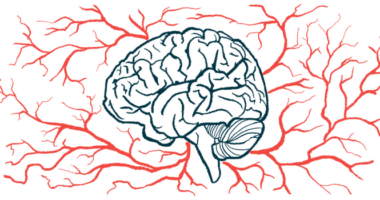Angelman Patients Show Accurate, Slowed Language Comprehension
A looking-while-listening test showcased patients' receptive language abilities

People with Angelman syndrome (AS) can demonstrate an ability to comprehend verbal communication as accurately as typically developed children, but tend to process the information slower, a study found.
This comprehension was evaluated using a looking-while-listening (LWL) test, designed to evaluate whether a person’s eyes will fixate on an image that matches a verbal cue, an indicator that they understood the communication.
The test is thought to offer a way of measuring receptive communication for nonverbal or minimally verbal people.
“These findings provide direct and objective evidence of receptive language abilities in participants with AS,” the researchers wrote, adding they also suggest LWL is “a promising approach to monitoring the developmental course of receptive communication and evaluating treatment effects in populations unable to reliably complete traditional standardized assessments.”
The study, “Spoken language comprehension in children and adults with Angelman Syndrome,” was published in the Journal of Communication Disorders.
Communication problems are common in Angelman syndrome and most patients have limited speech or are nonverbal throughout their lives. Their receptive communication, that is, the ability to receive and understand language directed at them, is thought to be better than their verbal skills, however.
But because of the severe intellectual and motor challenges that come with Angelman, standard tools for assessing receptive communication are difficult. Most information about these abilities comes from caregiver perceptions, which are subjective and may not be comprehensive.
Promise of eye gaze technology
Eye gaze tracking is thought to be a promising way to monitor receptive communication for people who aren’t verbal. It involves following a person’s eye movements as a measure of their visual attention.
The LWL test is one way of evaluating this. The assessment involves showing a person two images on a screen, for example, a cookie and a tennis ball, then asking a question verbally such as, “Do you see a cookie?”
If the person’s eyes lock on the image of the cookie, which is evaluated with an eye tracking software, it’s assumed they understood and processed the question. The test thus enables a measure of eye gaze accuracy, but also processing speed, or the speed at which the person fixates on the right object.
This method has been established as a feasible way to examine receptive communication among patients with other neurodevelopmental disorders. In the study, the research team examined whether the LWL test is similarly feasible for Angelman patients.
A total of 23 Angelman patients, including both adults and children, as well as 34 typically developing children underwent LWL testing. The test involved 28 trials and included 14 images of nouns (e.g. cookie) that are typically understood by children by at least 16 months of age.
Usable eye tracking data from at least some trials were obtained for 16 Angelman patients (five male), with a mean age of 17.7 and 32 typical children (14 males), with a mean age of 11.14.
Angelman caregivers also completed questionnaires about patients’ behavior and communication skills. Caregivers reported participants understood at least four of the 14 LWL words, with two participants understanding all 14.
Results showed both Angelman patients and healthy children had an ability to comprehend the verbal communication, with more looks at the correct object after it was verbally named than in the free visual exploration period before the verbal cue.
Caregivers weigh in
Among patients, the probability of looking at the right image after a verbal cue was associated with caregiver reports of bigger vocabulary size, better adaptive and interpersonal function, and fewer behavioral concerns.
With processing speed, Angelman patients took significantly longer to fixate their gaze on the right object than healthy children. Specifically, patients took a mean of 903.45 milliseconds (ms) to fixate their gaze, compared with 620.45 ms in typical children.
While the reason for this delay remains to be determined, “this finding has practical importance for caregivers, highlighting the need to allow for additional ‘wait time’ for an overt behavioral response to spoken language inputs when communicating with individuals with AS in daily life,” the researchers wrote.
The findings suggest that for Angelman patients, the “general pattern of spoken language comprehension for early-acquired words is comparable to that of typically developing children,” the researchers wrote, adding “the current study establishes the [LWL] paradigm as a feasible objective measure of receptive communication in AS, expanding information previously obtained indirectly from caregiver reports.”
The researchers noted that these results need to be replicated and the technique refined to validate the approach.







